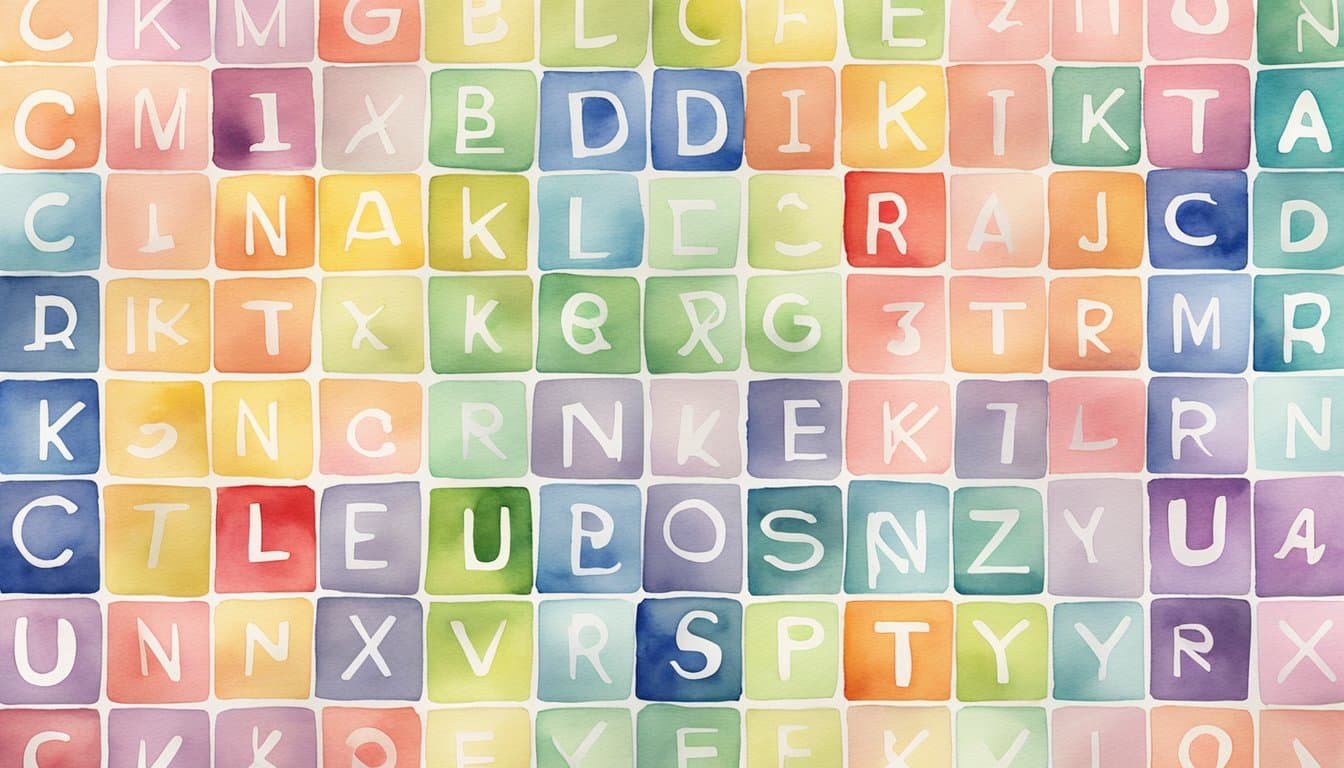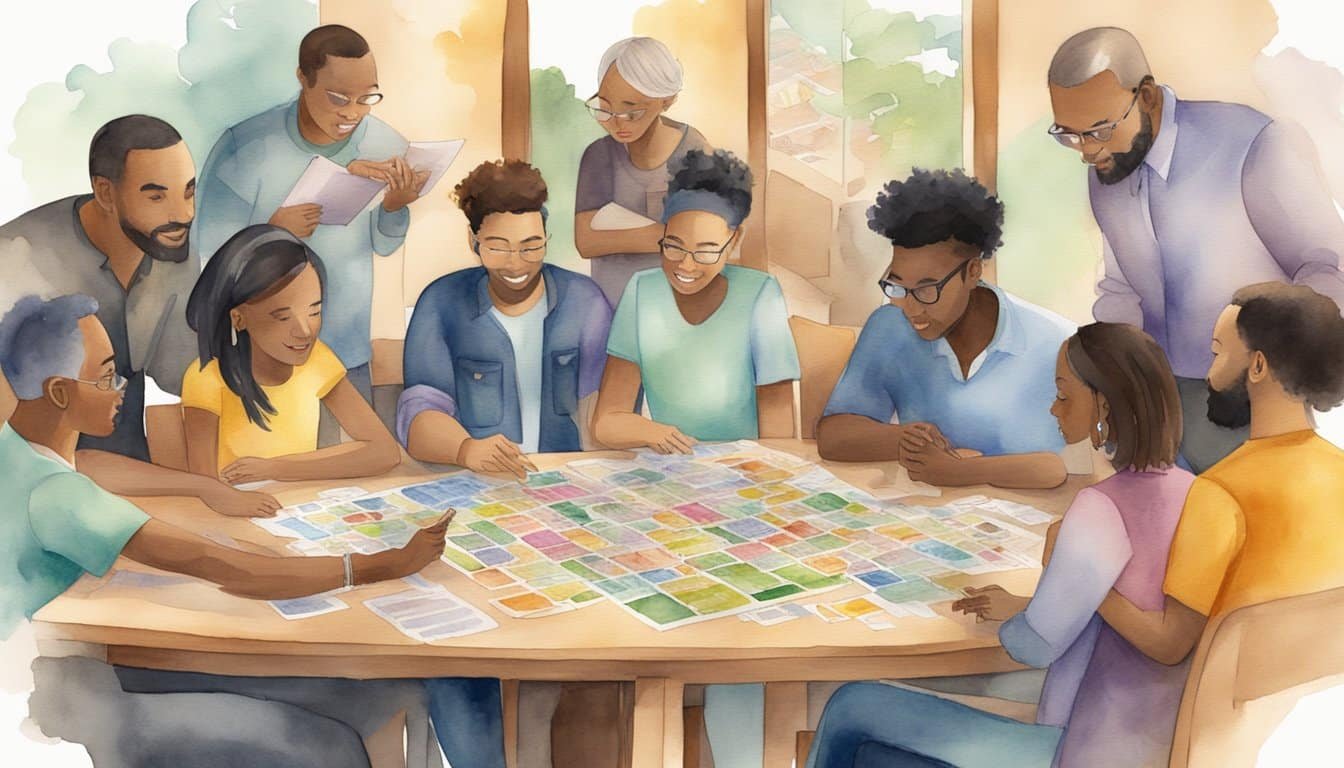Initial Strategy for Choosing Wordle Starting Words

Choosing the best starting word in Wordle sets a strong foundation for the game. An initial strategy involves understanding game mechanics, analyzing letter frequencies, and recognizing the importance of vowels.
Understanding the Game Mechanics
Wordle challenges players to guess a five-letter word within six tries. Each guess provides feedback through colored tiles: green for correct letters in correct spots, yellow for correct letters in wrong spots, and gray for incorrect letters. Knowing this, players can adapt their strategy for identifying the most information-rich starting words.
Analyzing Common Letters and Frequencies
Certain letters appear more frequently in the English language. An analysis of character statistics shows that vowels, along with common consonants like R, S, and T, are prominent in English words. Starting with words that include a varied mix of these can increase the chances of hitting on correct letters early in the game.
- Common Letters: E, A, R, I, O, T, N, S
- Sample Starting Words: RATE, STARE, ROATE (nonexistent but contains common letters)
The Importance of Vowels in Starting Words
Vowels are the backbone of English words, and each Wordle answer will contain at least one. Beginning with a word rich in vowels allows players to quickly pinpoint which vowels are used and in what positions. For example, using a starting word like “ADIEU” offers information on five different vowel placements right from the outset.
- Vowel-Heavy Words: ADIEU, AUDIO
- Frequency Tip: Include commonly paired vowels like ‘EA’ or ‘OU’.
Advanced Techniques and Tips
For those who have mastered the basics of Wordle, it’s time to level up your game with some advanced strategies. Let’s dive into the tools and tactics that can turn a player from good to great.
Using WordleBot and Other Tools
WordleBot is a popular tool among Wordle enthusiasts. It analyzes a player’s performance and suggests the optimal second word to use based on the feedback from their first word. Tools like WordleBot can streamline the word selection process, effectively reducing the guesswork and improving your overall strategy.
Deciphering the Color Clues
Every Wordle player knows that green means you’ve got the right letter in the right spot, yellow indicates the right letter in the wrong spot, and gray signifies a letter not in the word at all. The key is to use this color-coded feedback to narrow down possibilities for the subsequent guess. An efficient technique is jotting down a table of potential letters that can fit based on the color clues received.
Hard Mode Strategies
Hard Mode in Wordle challenges players by only accepting guesses that use confirmed hints. This means if you’ve got a letter flagged as green or yellow, you must use it in all subsequent guesses. This mode requires a meticulous strategy, where each game round’s information is critical, making the choice of each second word and further attempts vital. It pushes for a deeper understanding of English word structures and common letter placements.
Top Starting Words and Why They Work

Selecting the ideal starting word in Wordle can significantly boost one’s chances of solving the puzzle efficiently. The perfect starting words often contain a mix of common vowels and consonants that appear frequently in five-letter words, offering a strategic advantage.
Effectiveness of Commonly Recommended Words
Common starting words such as adieu and crate are often suggested for their clever inclusion of multiple vowels and frequently used consonants. For instance, adieu cleverly packs in four out of the five main vowels, which helps players quickly narrow down the pool of potential words. Likewise, crate combines both common consonants and a vowel which appear in many five-letter words, allowing players to test these letters at the outset.
- Adieu: Useful for screening the presence of key vowels early on.
- Crate: Balances common consonants (like ‘r’ and ‘t’) with a commonly used vowel (‘a’).
Words such as roate and slate have been through the wringer, with researchers using character statistics to show their effectiveness. They cover a wide spread of common letters and are structurally diverse to maximize the chances of getting early hits on correct letters and their positions.
Alternative Approaches with Less Common Words
While it’s common to stick to tried-and-true starting words, it’s noteworthy to consider less common words that might be advantageous. Words such as crane, trace, and arise not only still offer a good mix of commonly used letters but also present alternative letter positions which could lead to insightful deductions when common words fall short.
- Crane: Features a common consonant (‘n’) and an ‘e’ at the end, which can be a strategic placement.
- Trace: Good for checking the placement of common consonants such as ‘t’ and ‘r’ at the beginning of words.
Even though these words might not be the first to come to mind, they could provide unique advantages in gameplay, such as evaluating the placement of certain letters earlier in the game and setting a strong foundation for subsequent guesses.
Statistical Insight and Wordle Performance

Delving into Wordle statistics can reveal patterns in answers, offering strategies to improve one’s performance and maintain a daily streak in this popular New York Times game.
Wordle Answer Patterns
Wordle answers often follow certain patterns that can be discerned through analysis. For example, the inclusion of vowels in the starting word can increase the chances of guessing the right answer sooner. A methodical approach to choosing the starting word, based on frequency analysis of past Wordle solutions, can give players an edge. Here’s a brief overview of common traits found in answers:
- Common Ending Letters: Many Wordle answers end with ‘e’ or ‘y’.
- Popular Letters: Letters such as ‘a’, ‘e’, ‘o’, ‘r’, ‘t’, and ‘s’ often appear in answers.
A study highlighted in an IEEE paper found significant patterns in letter positioning, such as words ending with “e” and beginning with vowels. By understanding these tendencies, players can select starting words that cover a wider range of potential matches, thus improving their odds.
Improving Your Wordle Streak
Maintaining a Wordle streak takes more than just luck; it involves strategies informed by statistics and research. Here are a few statistically-backed tips:
- Start Strong: Choose a starting word rich in common vowels and consonants (e.g., ‘irate’).
- Analyze Past Answers: Regular players should study previous Wordle answers for trends.
- Letter Positioning: Pay attention to the common placement of certain letters in the English language.
Insights from a Taylor & Francis study suggest that starting with words that cover common letter probabilities can lead to better performance. They not just help in narrowing down possible answers but also in discarding unlikely letter combinations.
Understanding these patterns and using them to craft an entry strategy for each daily Wordle can help players enjoy the game while enhancing their chances at a victorious streak.
Cultural Impact and the Social Aspect of Wordle

Since its acquisition by the New York Times, Wordle has flourished, becoming a daily ritual and a social phenomenon. It has permeated the media, fostering a unique participatory culture.
Wordle in Media and Popularity
Wordle’s meteoric rise to popularity can largely be attributed to its frequent appearances across various forms of media. Major news sources, like the New York Times, not only report on the game’s quirks and the science behind the guesswork but also actively engage in discussions about the best starting words and strategies for the day’s puzzle. Its simplicity and the universal appeal of a word challenge have made it a staple mention in everyday conversation, both online and offline.
The game’s presence in social media has transformed it into more than just a morning brain teaser. Celebrities and influencers often share their results, fostering a culture around the game that extends far beyond its primary function as a word puzzle.
Sharing and Comparing Results
Sharing one’s Wordle results has become a key part of the experience. Players are eager to boast their victories or lament their near-misses. The feature to easily share outcomes, combined with the game’s “spoiler-free” results graphic, has sparked a new social dynamic where friends and followers compare scores and approaches.
Comparing results has encouraged a sense of camaraderie and friendly competition among players. Discussions often revolve around the strategies involved, like the optimal starting word or the least number of tries taken to find the solution. This aspect of collaboration and competition contributes to Wordle’s sustained presence not only as a game but as a shared social experience.

